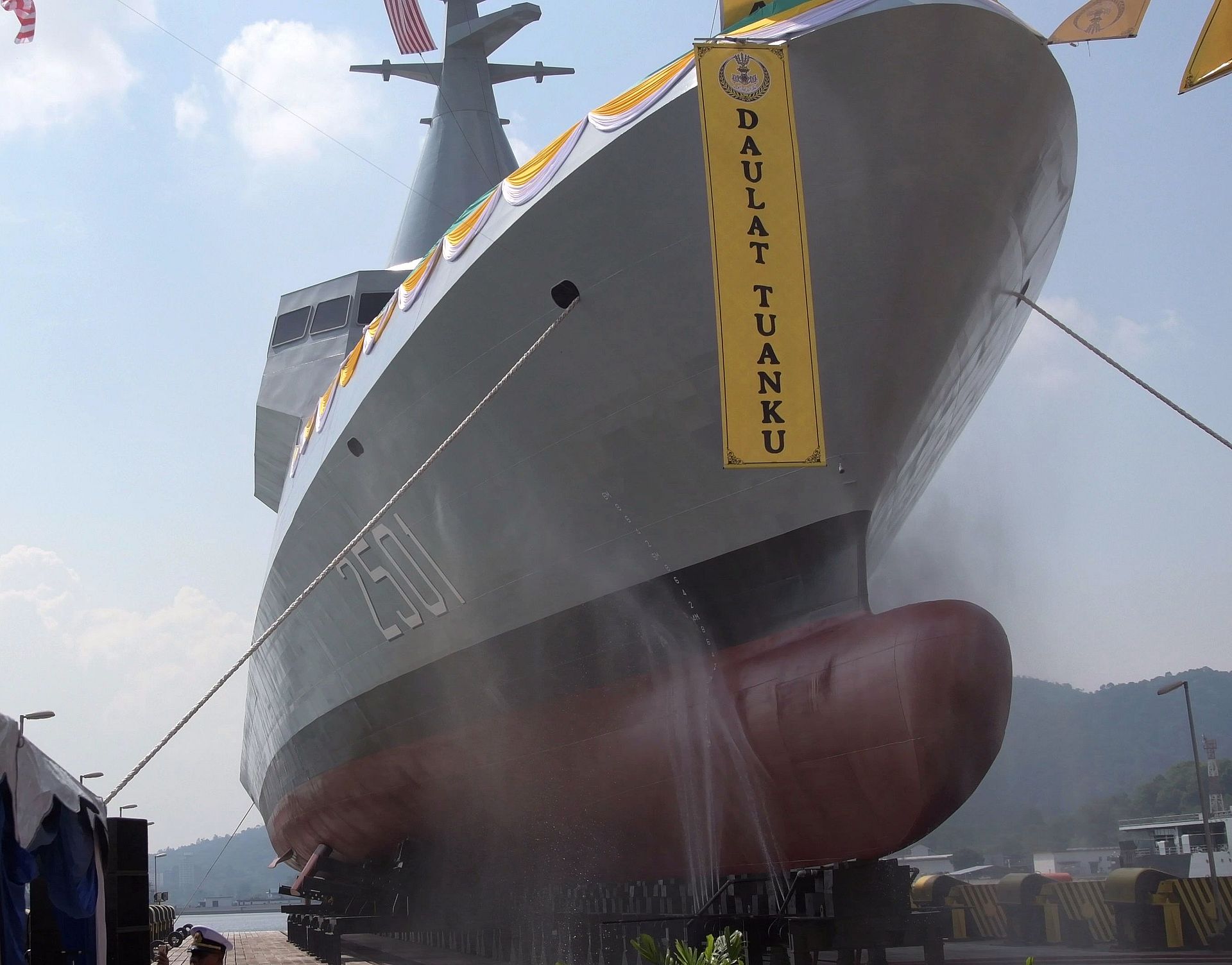
KUALA LUMPUR: Broken Record. The first of class LCS – PCU Maharaja Lela – is likely to be delivered to the RMN in 2019 without its major sub-system’s, its principal weapons. This was confirmed by Boustead Heavy Industries Corporation Bhd (BHIC) LCS programme Director Azhar Jumaat in an interview at DSA 2018.
BHIC sister company, Boustead Naval Shipyard (BNS) is building the ships at its yard in Lumut. Azhar says the company will be writing a letter to explain the reason for the delay, the delivery of schedule of the sub-systems – namely the surface to surface missiles and the surface to air missiles – the Kongsberg NSM and MBDA VL MICA.
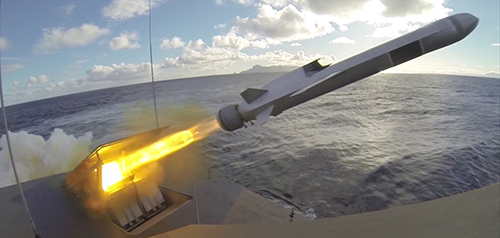
Live firing with NSM missile from corvette HNoMS Gnist outside Andøya in Northern-Norway
The government awarded the LOA (the contract letter) to Kongsberg at DSA 2018 while MBDA was only awarded the LOI for the MICA. No word yet on which torpedoes have been chosen for the six ship class. Although the launchers and other equipment had been signed by BNS (NSM in 2015), the government had not signed the contract for the missiles (NSM only) until DSA 2018.
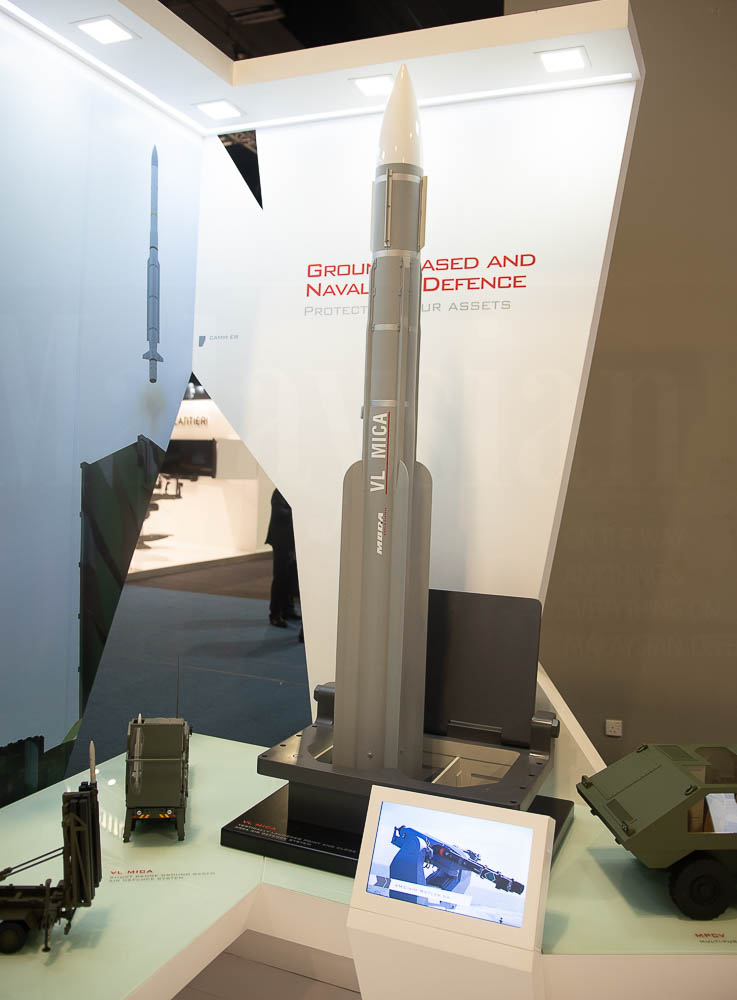
MBDA MICA missile
“The delay in getting the missiles obviously will have an impact on our schedules, we may have to deliver the ships without the capabilities,” says Azhar. BNS is contractually obligated to hand over Maharaja Lela to the RMN in early 2019 just in time for it to take part in LIMA 2019 with the rest of the class being delivered one by one starting in 2020.

J+S, now SEA torpedo launcher and handling system selected for the LCS.
With deliveries of the first NSM expected in at least 24 months following the contract signing, it is likely that Maharaja Lela could only test fire them in 2020 at the earliest. As for the MICA and torpedoes it could be later than that as both contracts have yet to be awarded.
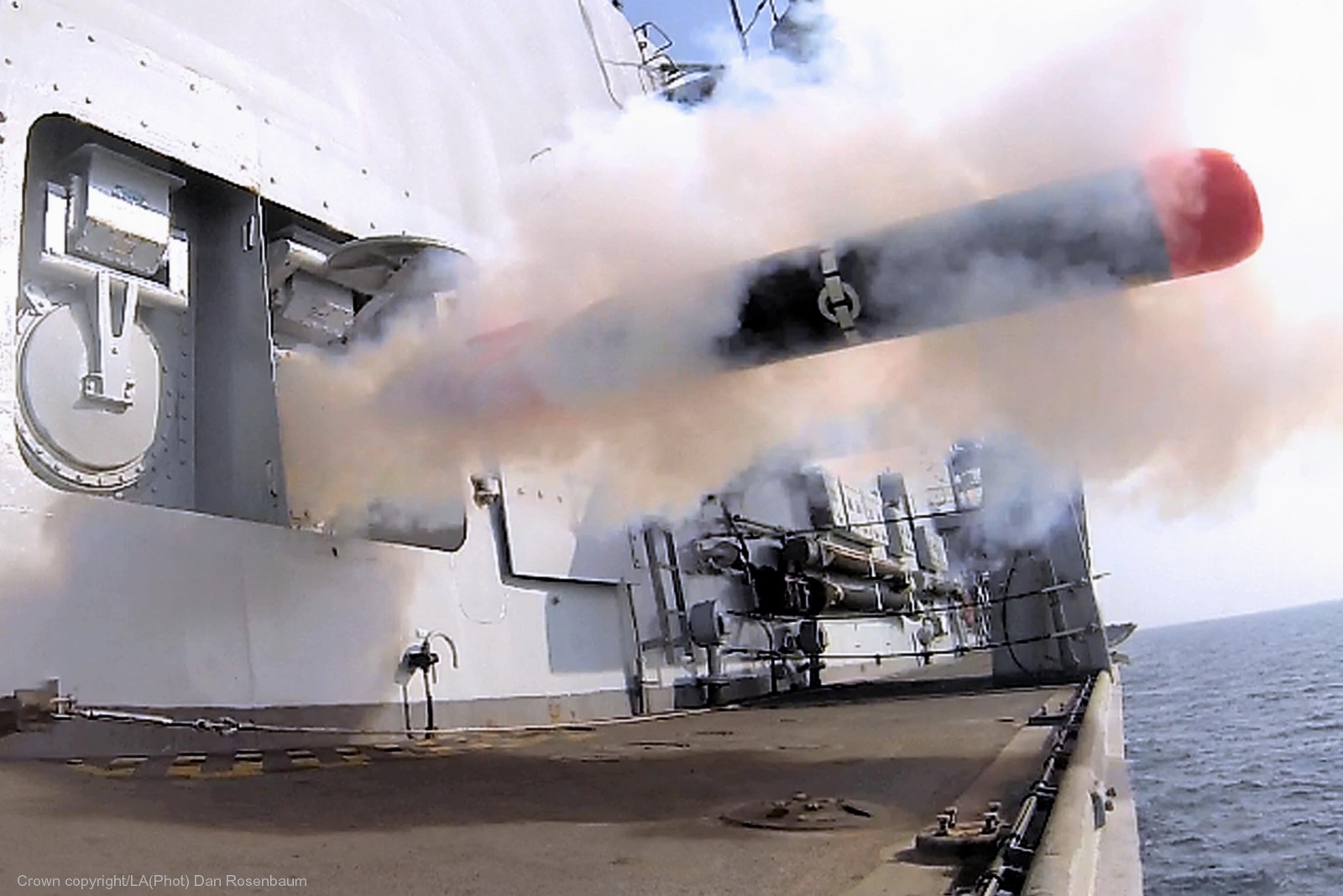
HMS Wesminster firing a torpedo from her launcher, which is similar to the one fitted to the LCS.
With this in mind it is likely that the commissioning of Maharaja Lela will only take place once the all systems and sub-systems have been tested and were in full compliance of the contractual obligations. Commissioning for the Lekiu class were delayed for some four years due to software issues with the Nautis combat management system. One of the issues I was told was that the CMS could not work reliably with the Seawolf SAM. Both ships were launched in December, 1994 and May 1995 and were commissioned October and November. 1999.
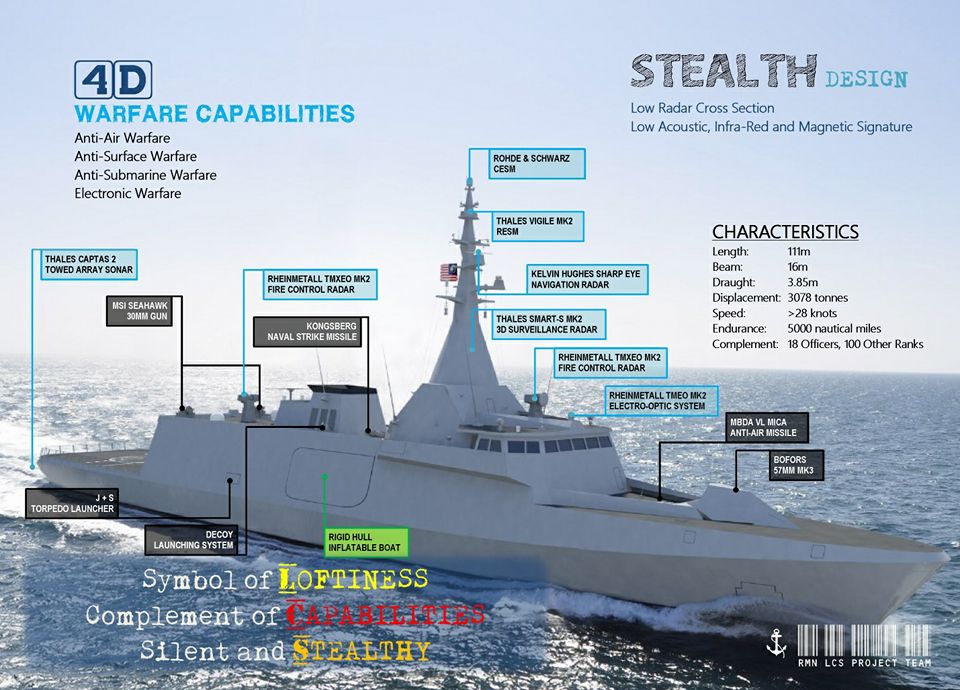
The LCS major equipment detailed. RMN graphic
Therefore, technically, BNS could after all meet its contractual obligations to hand over the Maharaja Lela in 2019 to RMN but commissioning for the moment is likely at the earliest is 2020. If they did not encounter any difficulties, of course.
That said the original contract for the LCS call for the six ships to be delivered in 2017. This was pushed to 2019 when the government amended the contract in 2013.
— Malaysian Defence
If you like this post, buy me an espresso. Paypal Payment

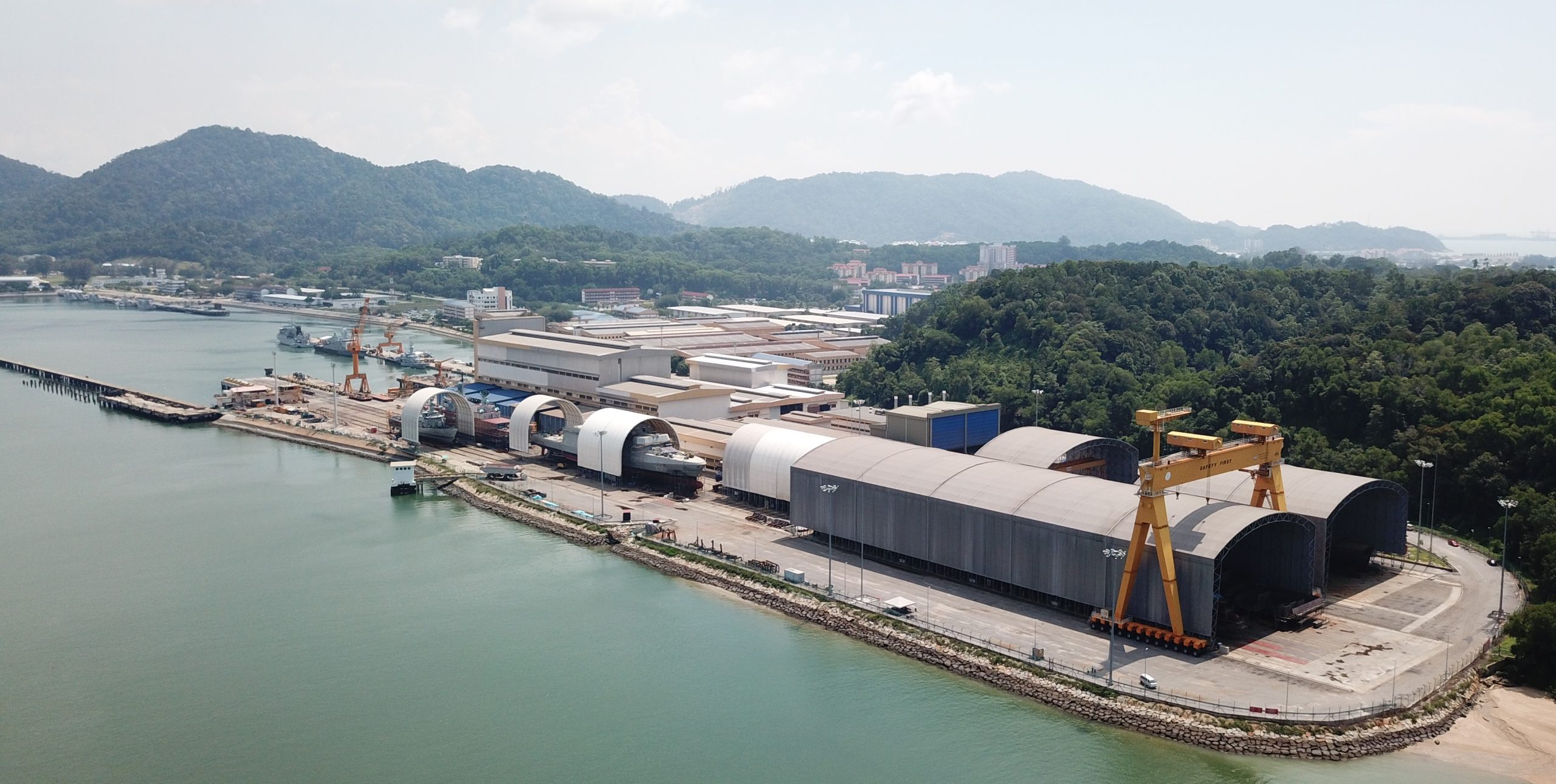
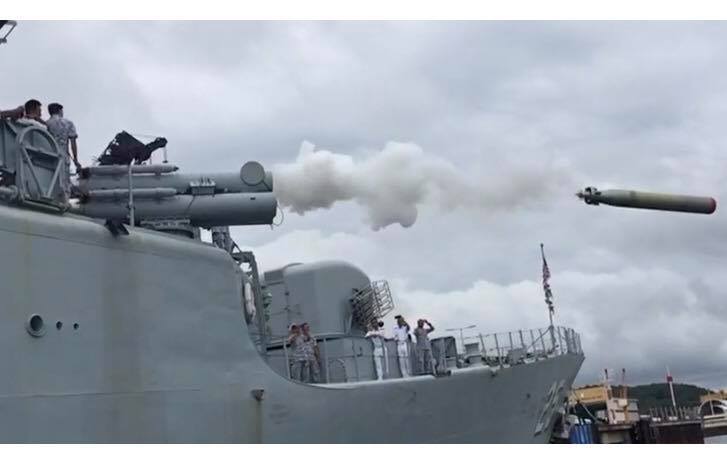
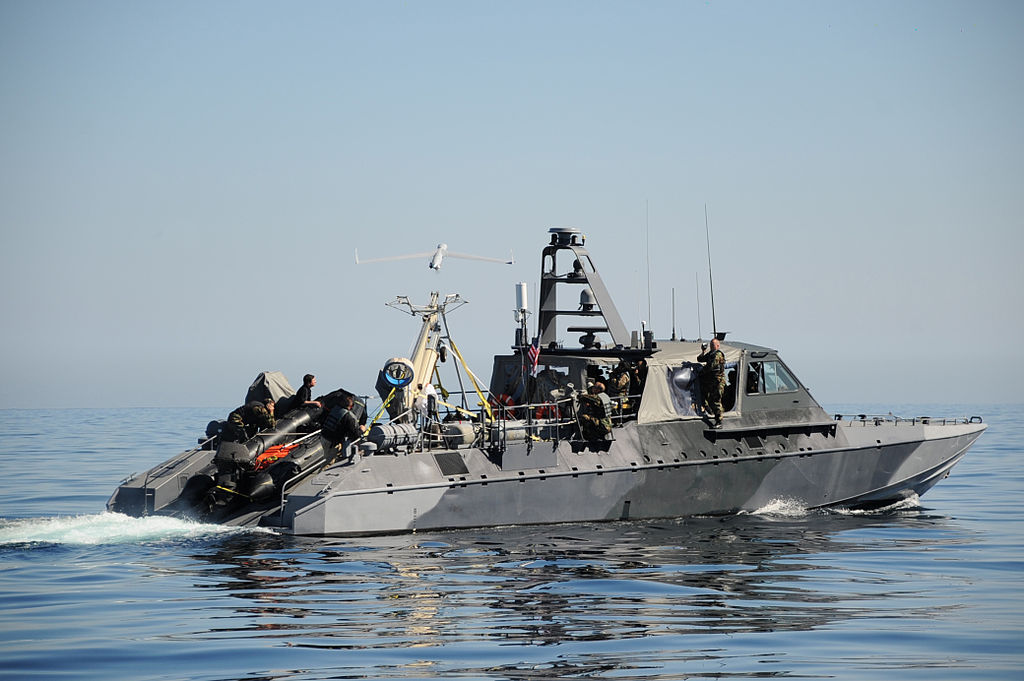
Marhalim, too many bad news for a span of a few days. IMO this was better left unreported…
Come on, better late than never. It’s just a ploy to delay payment, maybe? But a least there will be 6 new LCS, still good news in my opinion.
Another issue that led to late delivery of the Lekius is that during trials in the North Sea; the hatch of the Bofors [nt sure which ship] was left open and sea water got in. That was the responsibility of yard however. On integration issues I was told that the trackers had interface issues.
Well it’s not all bad news. The contracts for the LG1s and M-109s are signed and the army is making progress with its NCO programme. The LCSs will be delivered [during a period when the RMN will be familarising itself with them] without MICA and NSM but these will come at a later date. The question is why NSM was only signed when it was and why MICA has yet to be signed.
@ azlan
“The question is why NSM was only signed when it was and why MICA has yet to be signed”
Biggest probability?
$$$$
Contract detail + $ will be the main reason why it delay…
…. – ”Biggest probability?”
Could also have been issues related to contract implementation or technical issues that are unresolved. Who knows? Various reasons apart from cash issues could have led to the delay. Even during the times when cash was less of an issue; contracts were stalled for various reasons; sometimes for minor reasons.
…. – ”Biggest probability?”
Could also have been issues related to contract implementation or technical issues that are unresolved. Who knows? Various reasons apart from cash issues could have led to the delay. Even during the times when cash was less of an issue; contracts were stalled for various reasons; sometimes for minor reasons.
Azlan, don’t forget the MPA as well and the LMS and progression of MRSS. I totally agree, the good news outweigh the bad !
For a compex project such as this, challenges and difficulties in every process such as integration are common.
Reply
Yes challenges and difficulties are part of any manufacturing process but the delay in signing for the missiles could have been avoided. Yes the former RMN chief fought hard to get the missiles the service wanted but by mid 2015, the decision to get the NSM and MICA had been made. There was no longer a reason to delay the contracts as by mid 2016 the final design of the ships have been signed off. If the contracts have been signed off then the missiles would likely be ready for delivery even a small batch by 2019 ready for the trials.
Tom Tom – ”I totally agree, the good news outweigh the bad !”
To some extent yes. But apart from the recently ordered hardware there are many areas where the MAF is still in need of attention in various areas. .
– The vast majority of our infantry units still haven’t optics, NGVs and body armour in sufficient quantity. Granted most units have a bit of this and that but the fact remains; still not enough for the job.
– We have a basic tri service EW capability but there is still lot of room for improvement. Like most other militaries and even Tier 1 ones; we are very vulnerable to EW attack as well as disruptions to SATCOM, GPS and radio network. As theMAF becomes increasingly digitised it also leaves it more vulnerable.
– Despite the LCSs and LMSs on order; there is still no indication as to whether the 15/5 will really deliver as intended. For that matterwe have no idea if the 4 LMSs will be fitted out as intended shortly after delivery to enable them to do what is intended.
– I won’t elaborate but we have a number of weapons that are close to exceeding their shelf life and have to be replaced.
– The NCO programme is moving in the right direction but it all depends on adequate funding being provided to take in to the desired level.
– Despite the talk of a MALE UAS and the reported buy of a short range Chinese system; there are no immediate plans to equip infantry and artillery units with short range systems.
Off topic
Pakistan new damen OPV, similar to what ordered by MMEA. 2 to be built in romania for pakistan navy
http://www.defencenews.in/images_articles/2_img123418091715.jpg
Considering defence spending is only 1.1% of GDP, that is good! Unless the Malaysian public throw off their pathetic view of defence and develop some b_lls, we will forever be ‘lembek’ and will always need someone to bail us out of trouble.
“Unless the Malaysian public throw off their pathetic view of defence and develop some b_lls”
It’s not a surprise that the public has a “pathetic view” considering the high profile scandals, rojak procurements and bloated procurement costs. People know full well that these things are preventable.
“Considering defence spending is only 1.1% of GDP, that is good! ”
You get what you pay for. There is no doubt that our budget puts certain big ticket items beyond our reach. Then again, we are not getting good value on the items that ARE within our reach. Examples abound of us paying many times the cost of something as charged by the OEM, with the stated purpose of developing local industry
AM – ”It’s not a surprise that the public has a “pathetic view” considering the high profile scandals, rojak procurements and bloated procurement costs”
Other factors also at play; namely the fact that we live in a mostly benign environment and have never been in a major state of tensions with any neighbour. Other factors include failure on the part of the government to fully keep the public updated or informed of the need for adequate investments in defence and the fact that many amongst the public believe what they hear uttered by the opposition about defence; even if it’s totally false or highly misleading. The fact that practically nobody senior in the government or the opposition has ever been in uniform also plays a part.
Tom Tom – ”Considering defence spending is only 1.1% of GDP, that is good!”
Under Dr. M our policy was based on the fact that whilst we need some level of deterrence; defence spending would play 2nd to national development, healthcare, education, etc. Yes, the possibility of minor incidents were taken into account but overall the chances of a full scale war with anyone was considered unlikely; especially during the Cold War. Even if we reached a state of tensions; it was felt that diplomacy, either within ASEAN, the UN or back channel communications [which is regularly done but doesn’t make it to the media] would prevent a full scale war from erupting.
Us taking part in various defence/security forums/meetings and various exercises [including HADR ones] we participate in is part and parcel of how we conduct defence related diplomacy/relationships; aimed at forging partnerships with similarly minded countries [regional and otherwise] and preventing conflicts or instability. As such, when it comes to defence; there are various factors or mechanisms at play beyond the buying of military hardware.
I have a question. If it takes a few year delay, just because the contract for missiles were signed-late — how long would it takes to arm the fitted-with-but-not-for Kedah class — should 1 day we sign the missile buying contract?
Reply
It will normally take 24 months for the first product to be delivered but if the product is already in the pipeline, it will be faster of course. For example, if we were to arm the Kedah class with the NSM, of course, we can use the missiles signed for the LCS to be used on the Kedah class. Kongsberg might be able to speed up delivery of the NSM around 4 to 6 missiles to us – if they have other missiles in production and if the original buyer could be persuaded to advance them – but unfortunately they did not have any to spare so thats why Boustead is saying that they will have to deliver the first of class without them. If we were to buy Exocet Block 3 it will also be 24 months but again if the MBDA have extra missiles ready for delivery and the intended owner would allow them to give them us – several missiles could be delivered us much earlier. That is why its easier to buy US stuff, they always have things in stock and this could be diverted to other users faster. A cold start will take time of course
@ azlan
– as reported by marhalim, all malaysian army M4s comes with optics, why they don’t use them often is another matter. Body armour is also used on all operations, look back at all lahad datu pictures, all of the soldiers and police are equipped with body armour. Now they are replacing the old pattern body armour with the latest digital camouflage ones. Yes it is done in stages but it is not neglected.
– compared to most of our neighbours, we do have a relatively advanced EW capability, which i won’t elaborate here. But we have not invested much in aquiring EW attack capability. For example indonesia is equipping its new sigma frigates with a Thales Scorpion 2 jammers to tag along the Thales Vigile 100 ESM (the gowinds only to have the Vigile 100).
– Yes right now there is no indication that if 15to5 is executed as planned, it will give all the capabilities that TLDM wanted. But one thing I can see is that there is no linkage between TLDMs 15to5 plan and MMEAs Pelan Perancangan Strategik Maritim Malaysia 2040 (PPSMM 2040). MMEAs plan is also a good one, but from that plan there is really no need for TLDM to have so many patrol only ships planned that is the 18 gun only OPVs and 18 lightly armed LMS.
– the NCO programme is moving forward and is shown recently in DSA2018. As it is, right now it is still in developmental stage.
– some units have been equipped with some consumer grade UAS (DJI Mavic), which is exactly the same type that even the israeli army is equipping theirs at company level. Which IMO is a good move forward.
…..”– as reported by marhalim, all malaysian army M4s comes with optics”
We have gone through this before ………
All units may have some optics but not all troops or M-4s have optics. The report Marhalim carried said that all units have optics; not that all troops have optics or that we have enough optics to equip the bulk of troops that make up our lead units.
…. – ”Body armour is also used on all operations, look back at all lahad datu pictures, all of the soldiers and police are equipped with body armour.”
Yes, yes, I’m aware of the pics but the pics don’t give a true indication as to the army as a whole. Like the case with optics; there are is not enough body armour to go around. Some units have more than others; some units have some and some units don’t have them. Much of the body armour seen at Lahad Dato were rushed to troops. There weren’t enough to equip all the troops and some were the ‘soft’ type. Troops seen on the Thai border have body armour but there still isn’t enough to equip the whole unit. They are often swapped.
… – ”compared to most of our neighbours, we do have a relatively advanced EW capability, which i won’t elaborate here. But we have not invested much in aquiring EW attack capability.”
Given our threat perceptions and funding and given that even Tier 1 armies have issues; we can’t be expected to have a tertiary EW capability but it’s vital we keep abreast of things and have some level of capability. The good news is that there’s a tri-service EW school in Paya Jaras and the RMN has a EW Centre in Lumut but how effective both are are doing what they’re intended to do is dependent on funding and the amount of attention we can place in this area.
…. – ”Yes right now there is no indication that if 15to5 is executed as planned, it will give all the capabilities that TLDM wanted.”
Something I’ve been harping on for quite a bit. Even if the plan goes on schedule there is still no guarantee that the RMN will get the desired capability. With regards to mission modules; the programme has to be well managed like what the Danes did. Expecting too much from it and having shifting priorities will result in us being in a neither here nor there situation; like what the USN is faced with its LCS.
Another aspect to consider is that the Danes went ahead with the multi mission module concept because they were convinced it was what they needed; based on their requirements and other factors. We plan to take this route namely because of funding issues. Even then, the Danes hardly swapped modules. The 15/5 concept has been approved and locked with the EPU and MINDEF but I’m convinced that the plan will undergo a change in the future [under a different RMN leadership and shifting priorities].
…. – ”MMEAs plan is also a good one, but from that plan there is really no need for TLDM to have so many patrol only ships
planned that is the 18 gun only OPVs and 18 lightly armed LMS.”
Until the government can provide a firm indication as to when the MMEA can get what it needs the RMN has no choice but to factor in the hard fact that although it would like to concentrate on other areas; ships will still have to perform various peacetime constabulary duties that ideally should be the job of the MMEA.
…. – ”As it is, right now it is still in developmental stage.”
In some aspects we have gone beyond the ”developmental stage”. Our ships have been able to ”talk” to one other for quite a while now and surveillance assets we have are integrated. With regards to fully integrating NCO capabilities to support all level of operations and within a tri service environment [with as little friction as possible] then yes, we’re still relatively new in the game.
P.S.
…,
Read between the lines, this is what Marhalim reported : ”All of the Army’s infantry units equipped with M4 carbines and FN Minimis are issued with combat optics for operations.”
The fact that all units have them does not mean that all troops have them; profound difference. The plain fact is that we haven’t bought enough. As Marhalim said in response to something I said ”Some more than others….”
“Something I’ve been harping on for quite a bit. Even if the plan goes on schedule there is still no guarantee that the RMN will get the desired capability. With regards to mission modules; the programme has to be well managed like what the Danes did”
Right now the navy “plans” to get high number of ships that can only do peacetime patrol tasks, which is something MMEA should do. In MMEAs Pelan Perancangan Strategik Maritim Malaysia 2040 (PPSMM 2040), they are planning for 20 large OPV and 96 medium patrol craft (the size of NGPV and ex PA boats 22-50m in size). IMO it is better for TLDM to have fewer ships but with a potent ASW, ASuW and AAW capability. Something like 20 MMEA OPV, 10 gowinds and 12 NGPV is a good number for malaysia (that is 40+ large ships for patrol), with the money for extra ships used to arm the remaining ships in TLDM fleet.
As for the danes, you only mention about those stanflex systems. Have you seen what they are doing with their MCM systems?
… – ”IMO it is better for TLDM to have fewer ships but with a potent ASW, ASuW and AAW capability.”
As the saying goes : ”quantity has a certain quality to it”. Like most navies we have to do more with less – easier sad than done. Whether its for a limited war or just fulfilling routine peacetime duties; the RMN is over stretched with the number of hulls it currently has. A situation it previously didn’t face when it had its Vosper PCs; a gap the 27 Kedahs [over a 16 year period] were suppose to fill. To make things worse; as the FACs and Laksamanas need more time to be worked on and break sown more often. On the 15/5 and its projected numbers; are those the number of hulls the RMN feels is the minimum needed [both for peacetime commitments or a limited conflict] or is it based on what the government will approve? Various questions remain.
…. – ”Have you seen what they are doing with their MCM systems?”
I take into account that what works for others may not work for us. On paper it sounds great. We do away with dedicated MCMVs that tonne for tonne are the most expensive naval ships to build [with the exception of carriers] and the cumbersome opresa/wire sweep and ROVs. We replace those with a common hull equipped with modules consisting of a sonar, USVs, UUVs and even a UAS. In reality the whole set up [intended to deal with various types of mines] will be very expensive and might not [as it stands] be able to neutralise/destroy mines in a timely manner; which is why many in the USN MCM community are still not convinced; as are people in the RMN with a MCM background.
Lets see how things pan out.
Reply
TLDM will also not want to move out constabulary duties altogether, it is the stuff that gets highlighted in the media which is important but overlooked stuff for morale, funding, crew retention and relevancy. The high end naval stuff never gets any coverage
Remember, when the 27 NGPC requirement was laid out, there was only a requirement of a further 2 F2000 frigates, and there is no MMEA to patrol the EEZ other than TLDM. Of course TLDM also needs to do day to day patrols, but at the same time monitor things that MMEA cannot, like foreign electronics emissions (radar, communications, datalinks), submarine movements, aircraft movements. So TLDM ships should be something better equipped than what MMEA has.
Then comes the cost effectiveness. Those MMEA OPVs cost less than the smaller but similarly armed LMS. It even cost half of the gun only NGPV batch 2 that Bousted shown at the latest DSA2018. So why do you buy 18 gun only NGPV when MMEA is planning to have 20 OPV at the cost of 10 NGPV? Why not have less NGPV but have them armed for at least AShW and short range AAW missiles?
At the start of the millenium, Malaysia has:
5 large surface combatants (more than 1500 tons – 1 hang tuah, 2 kasturi, 2 lekiu)
6 medium surface combatants (600-1200tons – 2 musytari, 4 laksamana)
112+ small surface boats ( 22-50m length – 24 vosper, 4 perdana, 4 handalan, 6 jerong, 15 PZ, 20+ PX, 9 Bahtera, 30+ PA
In planning:
50 Large surface combatant (12 gowind, 18 NGPV, 20 OPV)
18 medium surface combatant (18 LMS. But looking at the models at DSA2018, follow on LMS is almost NGPV in size)
96 small surface boats (NGPC, new class of boats around 25m length to replace the ex-PA boats)
The question is do we really need a total of 50 large ships (1800-3000 tons) to patrol our EEZ?
So, what you are saying is that the platform sea trials would be done by early 2019. As the delay is only related to the contract for the actual missiles and not the launchers, I believe the Combat System sea trials can also be done for all the effectors. The only thing that would not be completed would be the Live Firing Trials for the missiles, which can be excluded from the present shipbuilding contract via a variation order. The LFT for the guns could be carried out as it can be done in the firing range near Lumut, similar to the NGPVs. In this scenario, the RMN would take delivery of a fully operational ship without only missiles.
….. – ”there was only a requirement of a further 2 F2000 frigates, and there is no MMEA to patrol the EEZ other than TLDM.”
There was agreement in principle to acquire a follow 2 Lekius but long term planning called for a total of 6. Yes there was no MMEA and that is why there were plans for the Kedahs to replace the Vospers.
…. – ”So TLDM ships should be something better equipped than what MMEA has.”
Understand what the RMN’s priority is. The priority at the moment [as I mentioned previously] is to get new hulls ASAP to replace the FACs and Laksamanas [both becoming more expensive to support] and to ensure that there are a minimum number of hulls in service. Once those new hulls are in service to perform various peacetime duties; the intention then is to seek funding to fit them out for more demanding roles. Once comes after the other; with regards to the LMS and follow on Kedahs.
….. – ”The question is do we really need a total of 50 large ships (1800-3000 tons) to patrol our EEZ?”
Once or assuming the follow on Kedahs are in service; the LCS’s will not spend most of their time on EEZ patrol.
@ azlan,
“Once or assuming the follow on Kedahs are in service; the LCS’s will not spend most of their time on EEZ patrol”
If the LCS not on EEZ patrol, what would they be doing then? Expeditionary cruise to faraway continents?
Even if you discount all the LCS, that is still remaining 38 huge patrol-only ships. Isn’t that a bit too much? Where will all the OPEX to come from? Recently a lot of the OPEX was cut for all 3 services, which did not get any news.
IMO the minimum number of large OPVs are 24, 12 in sabah/sarawak, 6 east coast, 6 wast coast. 38 excluding the LCS is a bit too much.
….. – ”If the LCS not on EEZ patrol, what would they be doing then? Expeditionary cruise to faraway continents?”
Supporting pearl hunting expeditions in the waters off Tahiti …..
Using a LCS for mundane tasks such as EEZ patrols/enforcement is a waste and an overkill. Whilst the LCS indeed will be – from time to time – conducting patrols, the availability of cheaper, lower spec ships for these types of tasks, will enable the LCS to do other things like focusing on training/exercises intended to deal with higher end threats, etc, performing roles that can’t be performed by cheaper, lower spec ships.
Of course the intention is to later fit out the LMS and follow on Kedahs to give them a combat [albeit a secondary one] role; the focus however is to first to have enough hulls in service and for them to perform various roles that won’t have to be performed by the LCS. For the RMN it’s better having a hull only armed with guns then no hull at all; especially when it’s so overstretched and has hulls that are in urgent need of retirement.
Remember the rationale behind having the Kedahs in the first place. The Lekius would have been our Tier 1 fleet and the Kedahs [whilst also having a combat capability] would focus on peacetime constabulary types roles. We’d all like the MMEA to be properly funded to enable the RMN to focus on its core role but unfortunately that day is still far away.
“performing roles that can’t be performed by cheaper, lower spec ships”
That role is to be done while patrolling the EEZ, which would also include listening to foreign subs, registering foreign EW emissions for the national EW catalogue, and tracking foreign aircrafts flying above our EEZs.
I have done some study with the Pelan Perancangan Strategik Maritim Malaysia 2040 (PPSMM 2040). I have calculated that with a steady budget of only USD 500 million (that is only about a quarter of what the navy wants) for each Rancangan Malaysia up to 2040, they will be able to field most of what ships and aircrafts that they plan to have. I would gladly do a guest post on my perspective of the MMEA 2040 plan, its connection to the navy’s 15 to 5 and the overall malaysian maritime defence if that is okay for marhalim (it would be a pretty long one).
Reply
Go ahead
China has deployed the YJ-12B anti-ship missile and HQ-9B air defense missile system on Fiery Cross Reef, Subi Reef and Mischief Reef.
Those reefs are around 300-400km from layang2 island.
…. = ”That role is to be done while patrolling the EEZ, which would also include listening to foreign subs, registering foreign EW emissions for the national EW catalogue, and tracking foreign aircrafts flying above our EEZs.”
We don’t need a LCS to register EW emissions – any ship with an ESM can do that. In fact, we have other means apart from ships to do that. Same goes with ”tracking foreign aircrafts flying above our EEZs”. Primary and secondary radar at Labuan [including DCA ones] do that; not RMN ships. If a ship in the area with a radar happen to be there fine but tracking aircraft is performed by other means.
The fact remains that we intend to have a Tier 1 and 2 fleet; mundane, day to day roles will not be performed by the LCS; that is not what we got them for and that will be a waste of their potential.